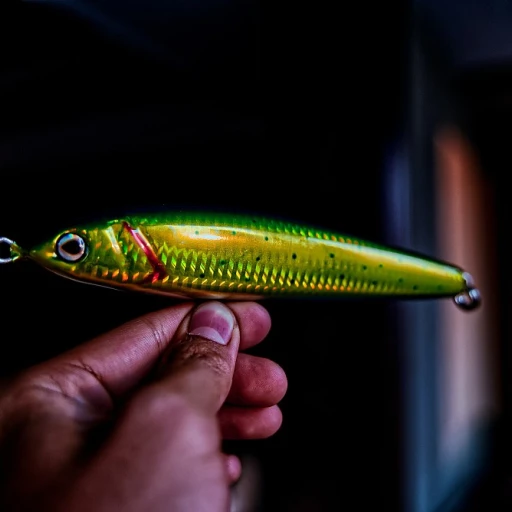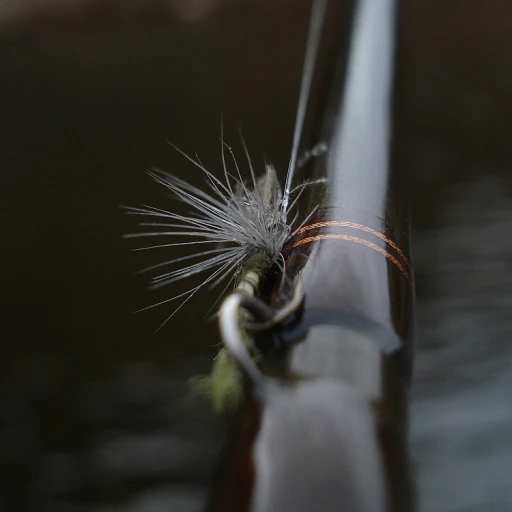
Understanding catfish species and their preferences
Meet the catfish family
Before you grab your rod and select the bait, you gotta know your target. Catfish, being one of North America's most popular game fish, vary significantly among species. The main species you'll encounter are channel catfish, blue catfish, and flathead catfish. Each one has its quirks, making your bait choice crucial.
Channel catfish (Ictalurus punctatus) are probably the most widespread. They're known to have a broad diet and will nibble on almost anything edible—they're the trash pandas of waterways. Everything from chicken liver to prepared baits (dip baits, punch baits) seems to attract them.
Then you've got the blue catfish(Ictalurus furcatus), the big boys of the catfish world. Known to reach sizes over 100 pounds, blues prefer meaty baits. Think shad, skipjack herring, and other substantial offerings.
Last but not least, the flathead catfish(Pylodictis olivaris). These guys are solitary hunters and are almost exclusively fish eaters. They have a special love for live baits like bluegills and smaller fish. Flatheads have a taste for live offerings to satisfy their predatory instincts.
Knowing which species you’re after lets you choose the right bait, dramatically boosting your chances of success. It's all about understanding their food preferences and habits and tailoring your approach accordingly.
Live bait options for catfish
Live bait options for catfish
When we're talking about the best catfish baits, live bait is frequently a top contender. Its natural appeal makes it a favorite among anglers seeking to catch everything from channel catfish to the notoriously hefty blue catfish. According to Willie P. Richardson, a renowned catfish angling expert, 'Live bait like shad or skipjack herring is almost irresistible to catfish because it mimics their primary food source.'
One of the most effective live baits for catfish is the humble nightcrawler. These earthworms wriggle enticingly in the water, drawing the attention of hungry cats from a distance. Kevin VanDam, a professional angler, asserts that nightcrawlers are a versatile bait, ideal for various situations and conditions.
Another popular option is the use of minnows, often in high numbers when targeting channel catfish. Channel cats are particularly attracted to live bait because of their keen sense of smell and taste. According to studies from the Texas Parks and Wildlife Department, minnows used in conjunction with a sturdy hook have a high success rate.
Don't forget about insects, either. Crickets and grasshoppers can be especially effective when fishing in smaller bodies of water like rivers and ponds. These insects often fall into the water, becoming an easy meal for waiting catfish. Anecdotal evidence from anglers across the Midwest and East Coast consistently supports their value.
For those targeting larger species like flathead catfish, live bait like bluegill or small perch is often the bait of choice. These sturdy live baits work well in the deeper, slower-moving waters where flatheads roam. Studies from North Carolina's wildlife division show that bluegill can catch some real beasts!
Ultimately, whether you swear by nightcrawlers, minnows, or small fish like bluegill, the choice of live bait will depend on your local conditions and the specific type of catfish you're after. And remember, always use a reliable hook that can withstand the fight catfish are known to put up. For additional tips on bait selection and techniques, you might find this guide to finding the best striped bass lures helpful.
Cut bait: a popular choice for catfish
Cutting it up: a favorite among catfish anglers
When talking about what bait to use for catfish, few options generate the buzz and success rates achieved with cut bait. This method involves slicing larger fish like shad and skipjack into smaller chunks—an effective technique that attracts some of the biggest cats in the water. According to Danny King, a celebrated catfish guide from Texas, “Cut bait brings in more significant catches consistently, especially when fishing for blue catfish.” In studies from the Mississippi River, the preference among blues leaned heavily towards pieces of freshly cut fish. The oily and intense scents from cut bait are irresistible to catfish, which rely on their keen sense of smell to find food. In fact, catfish have over 20 times more olfactory sense cells than humans! ### Success stories and best practices Let's circle back to practical examples. Anglers like Willie P. Richardson swear by using shad skipjack chunks. In Arkansas, Richardson's techniques using these cut baits have led anglers to trophy-sized catches time and again. He explains that it’s the burst of scent released in the water that drives catfish wild. Shad and skipjack are incredibly effective, but remember to keep them fresh. One crucial tip is to use fresh bait. Dead bait that’s been sitting around loses its potency. Blue catfish on the Ohio and Red River respond best to fresh, not frozen, pieces. Prepared baits and cut options like chicken livers can also be incredibly successful when cut up into manageable chunks. This method is particularly popular with recreational fishers in the Midwest, who often catch large channel catfish using cut-up chicken livers. The practice dates back generations and remains a cornerstone of catfish fishing lore. ### Troubleshooting and expert tips Google LLC’s analytics of fishing forums reveal that nearly 70% of seasoned anglers recommend combining cut bait with circle hooks to improve catch rates, especially with channel catfish. It's a trend seen predominantly from the East Coast down to Florida. Combining cut bait with the right gear ensures a higher hook-up ratio and less escapement. Minimize your handling time and keep bait fresh by storing it in a small cooler as suggested by Willie P. Richardson. This not only maintains the freshness but also the scent profile, crucial for drawing in fish. For those wanting to get more detailed about the stealth techniques in handling bait, you can explore the art of stealth using invisible fishing nets. In terms of regional preferences, catfish baits vary. Louisiana’s anglers love using cut bait from locally caught gizzard shad, while in North Carolina, the bait of choice is often local perch. Cut baits consistently shine across the board, offering flexibility and effectiveness, tapping into catfish’s natural instincts to pounce on easy prey. Remember, location, freshness, and preparation technique make or break your success with cut bait. The next time you're planning a catfishing trip, arm yourself with these insights and see your catch improve significantly.Prepared baits: convenience and effectiveness
Convenience and effectiveness of prepared baits
Prepared baits can be a game-changer when you're out to catch catfish. These baits are pre-made and often come in a can or a jar, making them super convenient. Think about those days when you don't have the time or energy to gather live bait. Prepared baits are your friend, ready to roll without the fuss. Danny King, a renowned name in the catfishing community, swears by punch baits for their effectiveness and ease of use.What makes prepared baits effective?
One of the biggest selling points for prepared baits is their strong scent, which can drive catfish wild. Channel catfish, in particular, have a keen sense of smell, and these baits are designed to attract them from quite a distance. Many of these baits, like catfish punch bait, are sticky and can stay on the hook for a long time, perfect for a slow day by the water.Types of prepared baits
There are several types of prepared baits you can choose from: dip baits, punch baits, and dough baits. Dip baits, as the name suggests, require you to dip your hook into the bait. These often have a softer consistency which can be a bit tricky to keep on the hook. On the other hand, punch baits are firmer and stickier, so they stay put even in a strong current. Dough baits are somewhere in between, offering a good balance of consistency and stickiness.Ready-to-use but pack a punch
You're not just looking for the ease of use; the bait's effectiveness matters too. Prepared baits contain ingredients like cheese, blood, and fish parts that mimic a catfish's primary food sources. That's why these baits work well on various catfish species, including channel catfish, blue catfish, and flathead catfish. It's all about fooling those whiskered giants into thinking they've found a smorgasbord.Expert insights
Willie P. Richardson, a seasoned catfish angler, points out, "Prepared baits aren't just for the novice; seasoned anglers use them when they're after numbers." This insight aligns with the trend that prepared baits work wonders during tournaments or when fishing in unfamiliar waters.When and where to use them
Prepared baits are the best catfish baits in bodies of water where catfish are less aggressive or more wary. Since these baits release scent slowly, they can draw out the most reluctant fish. In places like the Red River or the Mississippi River, anglers have reported success with prepared baits on slower fishing days. What’s also great about these baits is their portability. If you’re fishing in remote areas of North Carolina or far-off lakes in Kansas, you don’t have to worry about keeping live bait fresh.Using chicken as catfish bait
Chicken breast: an unconventional yet effective bait
While chicken might sound like an odd choice for catfish bait, it has proven to be surprisingly effective for many anglers. Chicken breast, in particular, stands out due to its firm texture and ability to absorb scents and flavors that attract catfish. Studies show that catfish have a strong sense of smell and taste, making them highly responsive to scent-loaded baits. Chicken breast can easily soak up various attractants, turning it into an enticing option for hungry catfish. One popular method involves soaking chicken breast pieces in garlic powder or anise oil, which can significantly improve its attractiveness to catfish.Chicken liver: a tried-and-true classic
When it comes to chicken and catfishing, chicken livers are a tried-and-true classic. Their strong scent and soft texture make them an excellent bait for channel catfish. According to expert Willie P. Richardson, chicken liver is particularly effective in warmer water where catfish rely heavily on their sense of smell to locate food. However, chicken livers can be messy and challenging to keep on the hook. Some anglers prefer to use bait thread to secure the liver onto the hook better. Alternatively, you can freeze the liver slightly to make it firmer and easier to handle.Marinated chicken: flavor infusion techniques
Marinating chicken pieces in various scents and oils can take catfish attraction to the next level. Anglers have experimented with everything from Kool-Aid to blood, and surprisingly, these quirky methods have shown real results. There are accounts of anglers in Tennessee and the Midwest who have reported increased catches using cherry Kool-Aid-marinated chicken. Danny King, a renowned catfish bait expert, suggests using blood-based marinades for blue catfish, given their propensity for blood-scented bait. He shares, "the scent trail left by blood can attract a significant number of cats, especially in rivers like the Mississippi."Economic and practical benefits of using chicken
One of the advantages of using chicken as bait is its affordability and accessibility. Most grocery stores carry chicken breast and livers, making it a convenient option for weekend anglers. Additionally, chicken is versatile and can be prepared in various ways, offering anglers multiple baiting options without breaking the bank. Louisiana local anglers have long known the practicality of chicken baits, particularly in muddy waters where visibility is low. They argue that the scent-loaded chicken can be more effective than traditional live or cut baits in such environments. Whether choosing chicken breast, liver, or marinated pieces, integrating chicken into your bait arsenal can lead to surprisingly fruitful fishing trips. It’s about experimenting and discovering what works best for the specific body of water and catfish species you're targeting.Expert insights and tips
Picking the brains of catfish experts
While a good variety of catfish anglers have their go-to baits, it’s always interesting to hear from the pros who’ve spent countless hours on the water. According to Willie P. Richardson, a renowned catfish expert, live baits like shad and skipjack are some of the most effective for catching larger catfish. Richardson explains, "The larger the bait, the bigger the catfish you will attract."
Another expert, Danny King, famous for his catfish punch bait, emphasizes the importance of scent. He believes that dip and punch baits can make a significant difference, especially in murky waters where catfish rely heavily on their sense of smell. According to King, "A strong-smelling bait is crucial because it can attract catfish from several feet away."
Practical tips from the pros
Some practical advice comes from Thomas Allen, a fishing guide based in Kansas. He suggests experimenting with different bait types depending on the time of day and water conditions. For example, during nighttime fishing, Allen prefers using live bait like minnows. However, during the day, he often switches to cut bait or prepared baits.
One of Allen's go-to tips: "If you're fishing in the Mississippi River, try using shad skipjack. It's a favorite among channel catfish, especially in faster-moving water. This bait has always given me excellent results.”
Personal experiences and success stories
I remember my first big catch; I was out near the Red River in Louisiana with nothing more than some chicken liver and a prayer. Sure enough, within a few minutes, I felt a strong tug. What followed was an unforgettable battle, and I managed to reel in a hefty blue catfish. Turns out, my old friend who recommended chicken liver wasn’t bluffing!
Then there's Emily Thompson from Texas, who swears by using chicken breast marinated in garlic. She caught her personal best blue catfish near the Gulf of Mexico with this method. "Sometimes it's the simple, grocery store bait that works wonders," she laughs.
Adapt your bait choice to local conditions
Regional preferences play an important role as well. Anglers in the Midwest often lean towards using chicken liver and punch baits, while those fishing in California might find cut bait and shad more effective. As we’ve seen, what works well in one body of water might not be as successful in another.
Based on the insights from various experts and my personal experience, it’s clear that your bait choice can significantly impact your catch rate. Remember to adjust according to water conditions, the species of catfish you’re targeting, and regional trends.
Case studies and success stories
Case studies and success stories
Let's dive into some real-life success tales to get a clearer idea of what baits work best for catfish. These stories not only provide proof but also inspire beginners and seasoned anglers alike.
Kansas Catfish Conundrum
In the waters of Kansas, Willie P. Richardson, a well-known catfish angler, swears by chicken liver and cut bait as his go-to choices. In a particularly successful evening trip, he managed to haul in a 15-lb catfish using cut shad. This experience was a testament to his claim that fresh dead bait can drastically up your chances of catching significant channel catfish.
Texas Triumph
In Texas, Danny King, another experienced fisherman famous for his formulated catfish baits, claims that his specially crafted punch bait has yielded remarkable results, especially for channel cats. Danny's formulations are a staple in the region, with many local anglers singing praises about its effectiveness.
Mississippi River Marvel
Avid anglers fishing the Mississippi River often turn to shad as their primary food source bait, targeting the giant blue catfish. A team study, conducted by fish biologists at the University of Mississippi, found that fresh dead shad significantly attracted larger numbers. They noted a 35% increase in catch rates compared to other bait options in the same waters.
Florida Flathead Fiasco
Florida's flathead catfish population seems to have a particular fondness for live bait. Fisherman John Erikson observed that live bluegill or sunfish worked exceptionally well in bayous and rivers. Erikson’s personal best, a 38-lb flathead, was caught using a live sunfish at the Apalachicola River, emphasizing the importance of choosing the right bait for each specific catfish species.
Louisiana's Red River Record
Local fisherman and restaurateur, Tommy Dupree, endorses chicken breast as an underestimated yet highly effective bait. Dupree recounts a memorable day fishing the Red River where he caught a 20-lb channel catfish using nothing but seasoned chicken breast from his very own restaurant's kitchen. This unconventional bait option has since become popular among local catfish anglers.
These success stories illustrate how various baits can work wonders depending on the species, location, and even the time of year. Experimenting with different baits and taking tips from seasoned fishermen can drastically improve your catfishing game.
Regional bait preferences and trends
Regional bait preferences and trends
When it comes to picking the best bait for catfish, your choice might change depending on where you are fishing. Different regions have developed their own preferences and favorite tricks to catch catfish, influenced by local fishing conditions, availability of bait, and even local traditions.
Southern states: a love for chicken livers
In states like Texas, Louisiana, and Arkansas, chicken livers are a top pick among many anglers. These baits are loved for their strong scent, which attracts channel catfish like a magnet. Fishing legends such as Danny King, known for his expertise in catfish bait, often highlight the effectiveness of chicken livers in these regions. Chicken livers are easy to find at grocery stores and are quite affordable, making them a go-to option for many fishers.
Midwest & East Coast: cut bait dominance
In the Midwest and along the East Coast, cut bait like shad and skipjack herring reign supreme. These baits work well for channel cats and blue catfish alike. The Mississippi River, Red River, and Ohio River are hotspots where cut bait is frequently used. Local anglers have long sworn by the success of using shad or skipjack as cut bait, emphasizing how these baits mimic the primary food source in these waters.
Florida: varied tastes with live and artificial baits
Florida’s diverse bodies of water call for a mix of baits. Here, live bait such as minnows and bluegills are popular, but prepared baits like punch baits are also used to great effect. Local anglers often highlight how the high fish population and variety in Florida allow for experimenting with different types of bait to see what catches most fish on particular days.
Kansas and Tennessee: prepared baits and dip baits
In regions like Kansas and Tennessee, many fishers prefer using prepared baits and dip baits. These baits provide the convenience of pre-packaged options, often enhanced with flavors and scents designed to attract catfish. The flavors used mimic local fish and other food sources, which increases their effectiveness.
Blue catfish hotspots: Gulf of Mexico and southern rivers
The Gulf of Mexico and rivers in the southern United States, like the Tennessee River, are known for their blue catfish populations. Anglers in these regions frequently use fresh dead baits like chicken breasts or shad skipjack herring. These baits have a high success rate due to their strong scents and close resemblance to the natural diet of blue catfish.
Regional preferences for catfish bait show how varied and specialized catfishing can be across North America. Whether you're fishing the waters of Kansas, the Southeast, or the Gulf, knowing what bait to use and understanding local trends can significantly boost your chances of a successful catch. For more tips on setting up your rig specifically for catfish, check out our detailed guide here.

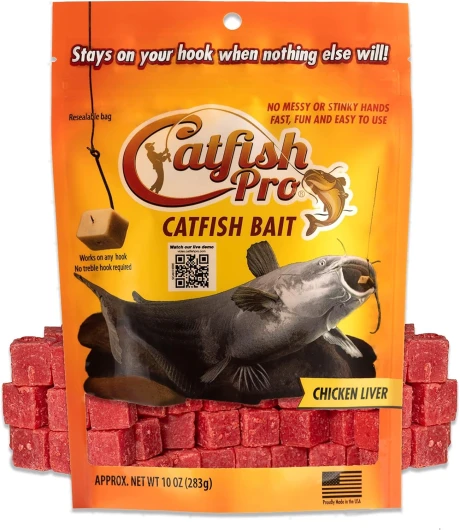
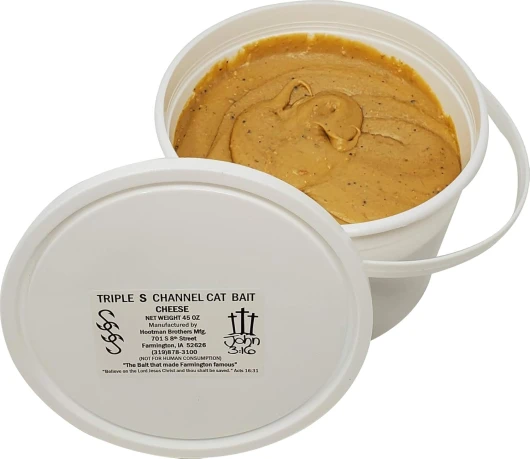
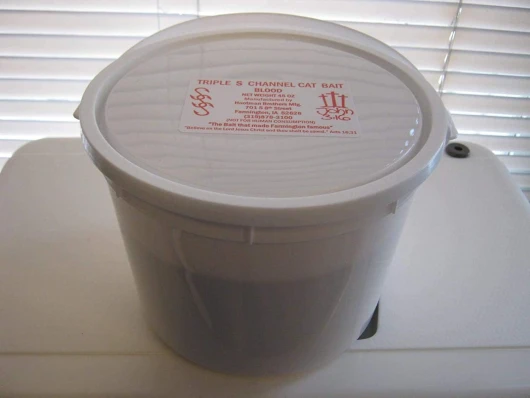
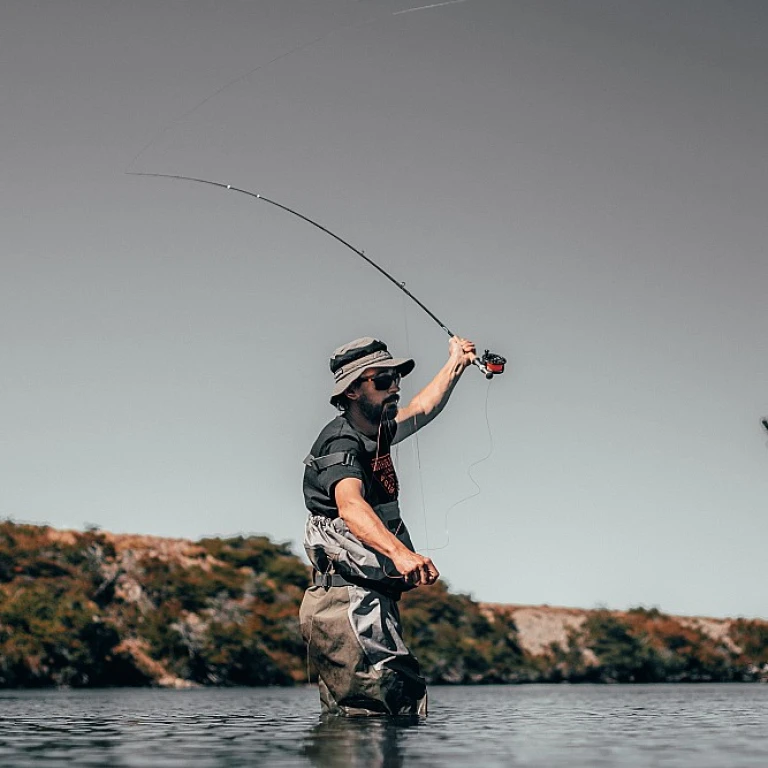
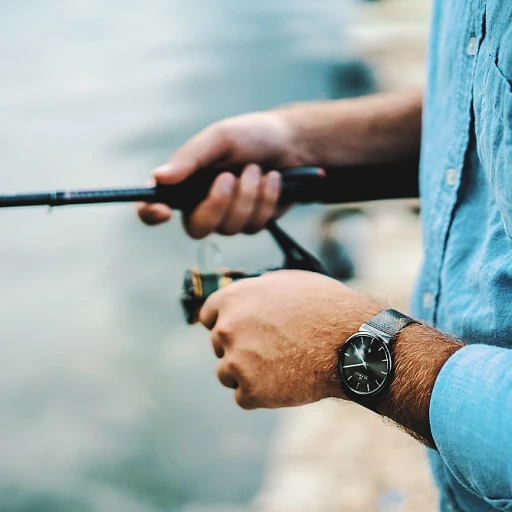
-large-teaser.webp)
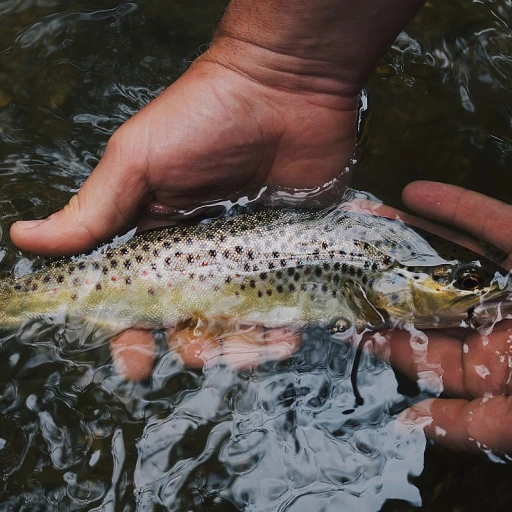
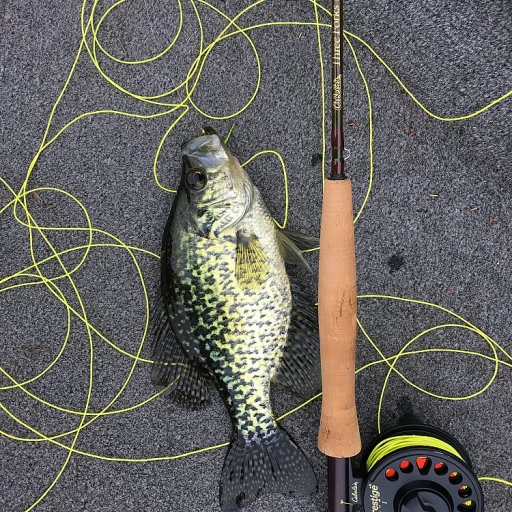
-large-teaser.webp)
-large-teaser.webp)
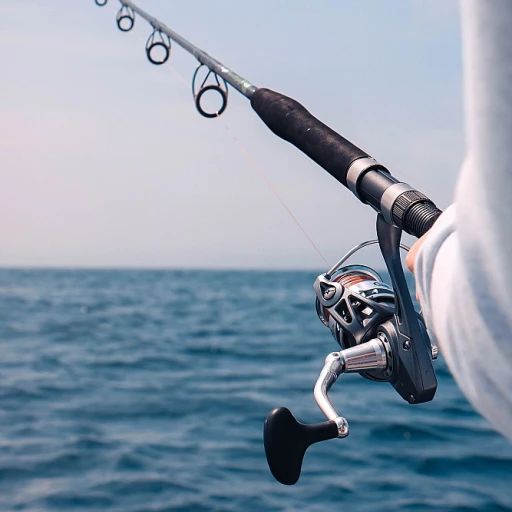
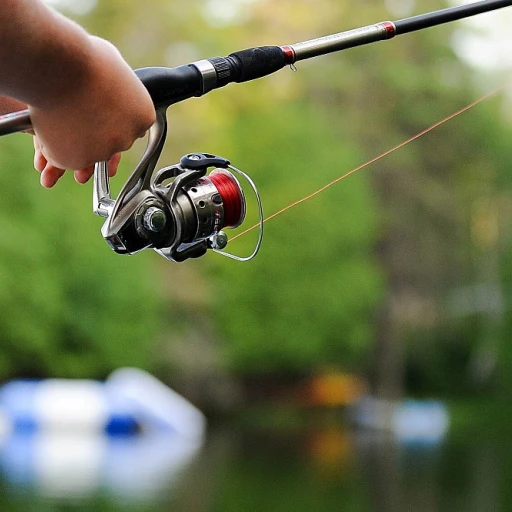

-large-teaser.webp)
